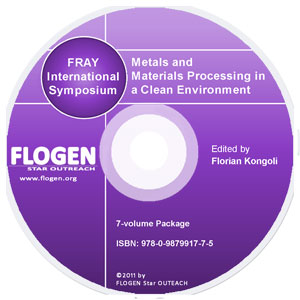
CD shopping page |
2011-Sustainable Industrial Processing Summit
|
| Editors: | Florian K |
| Publisher: | Flogen Star OUTREACH |
| Publication Year: | 2012 |
| Pages: | 646 pages |
| ISBN: | 978-0-9879917-6-8 |
| ISSN: | 2291-1227 (Metals and Materials Processing in a Clean Environment Series) |
Solvent Selection For Single–wall Carbon Nanotubes: New Best Solvents, Acids/superacids And Guest–host Inclusion Complexes
Francisco Torrens1; Gloria Castellano2;1UNIVERSITAT DE VALENCIA, Valencia, Spain; 2UNIVERSIDAD CATOLICA DE VALENCIA, Valencia, Spain;
Type of Paper: Regular
Id Paper: 183
Topic: 9
Abstract:
The analysis of 1-octanol–, cyclohexane– and chloroform (CHCl3)–water partition coefficients Po–ch–cf allows calculating molecular lipophilicity patterns (MLPs), which show that for a given atom logP is sensitive to functional groups. Program CDHI cannot properly differentiate between non-equivalent atoms. The most abundant single-wall carbon nanotube (SWNT), (10,10), presents consistency between a relatively small aqueous solubility and large elementary polarizability, Po–ch–cf and kinetic stability. A class of non-hydrogen-bonding Lewis bases with good solubility is found. The SWNTs in some organic solvents are cationic while in water/Triton X-100 (TX) are anionic. A group of eight new solvents, two superacids and nitric acid (HNO3) behaves as best solvents. Categorized solubility is semiquantitatively correlated with solvent parameters. Solvochromic term b correlates positively while permittivity and volume correlate negatively. The electron affinity of D-glucopyranoses (D-Glcpn) suggests aqueous colloids of anionic SWNTs. Dipole moment for D-Glcpn-linear increases until n = 4 in agreement with an 18-fold helix. The Inz– and SWNT– form inclusion complexes with cyclodextrin (CD) and amylose (Amy). Starch, D-Glcp, CD and Amy are co-solvents of SWNTs. Unperturbed guests–hosts expand the central channel. Composites and conducting/antistatic coatings are some of the most sought-after applications of nanotubes. Homogeneous, stable and spontaneously formed solutions of unmodified nanotubes should be a welcome starting material. Poly(vinyl alcohol) composite films present improved mechanical properties when compared to the pristine polymer. Another development is the possibility to functionalize selective and stoichiometrically the nanotube walls, in the same way as in the early days of C60 chemistry where C60Rn molecules could be selectively obtained from C60n– solutions. Adjusting the charge on the nanotubes one could precisely monitor the amount of attached functional groups on them. The results place nanotube processing onto a solid scientific ground and encourage the engineering of macroscopic nanotube materials.